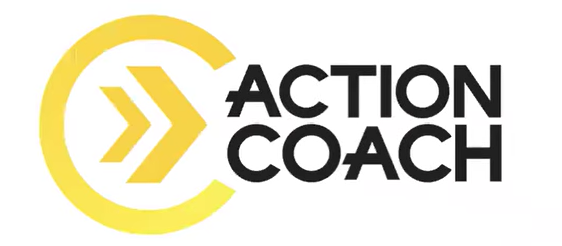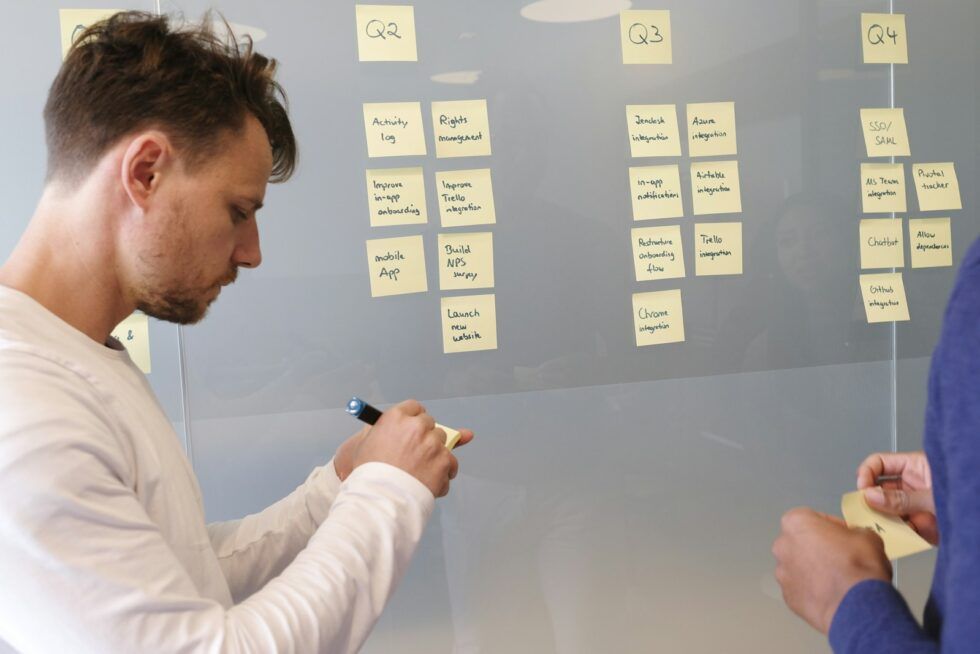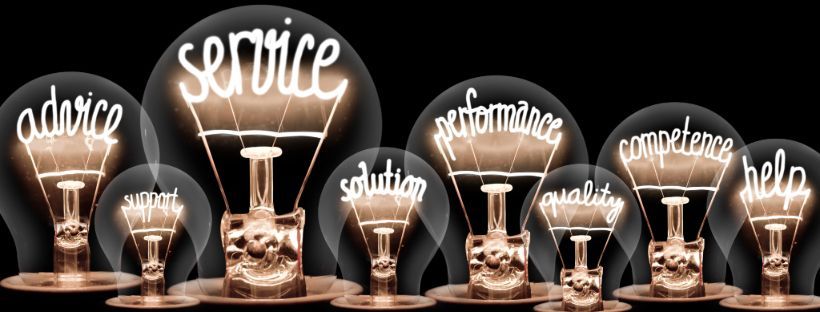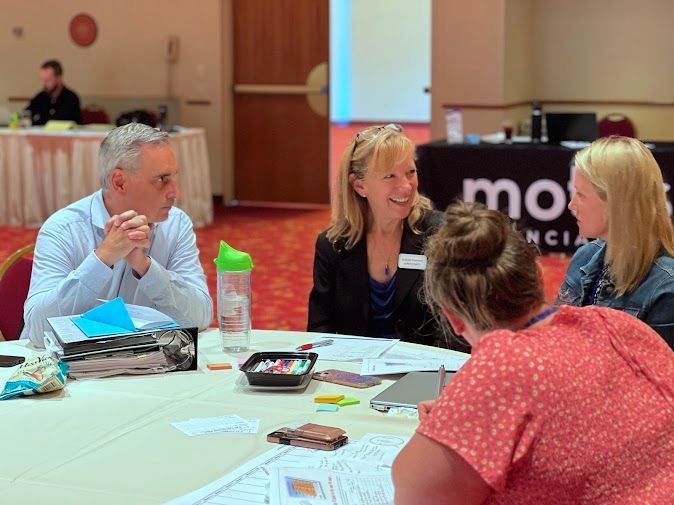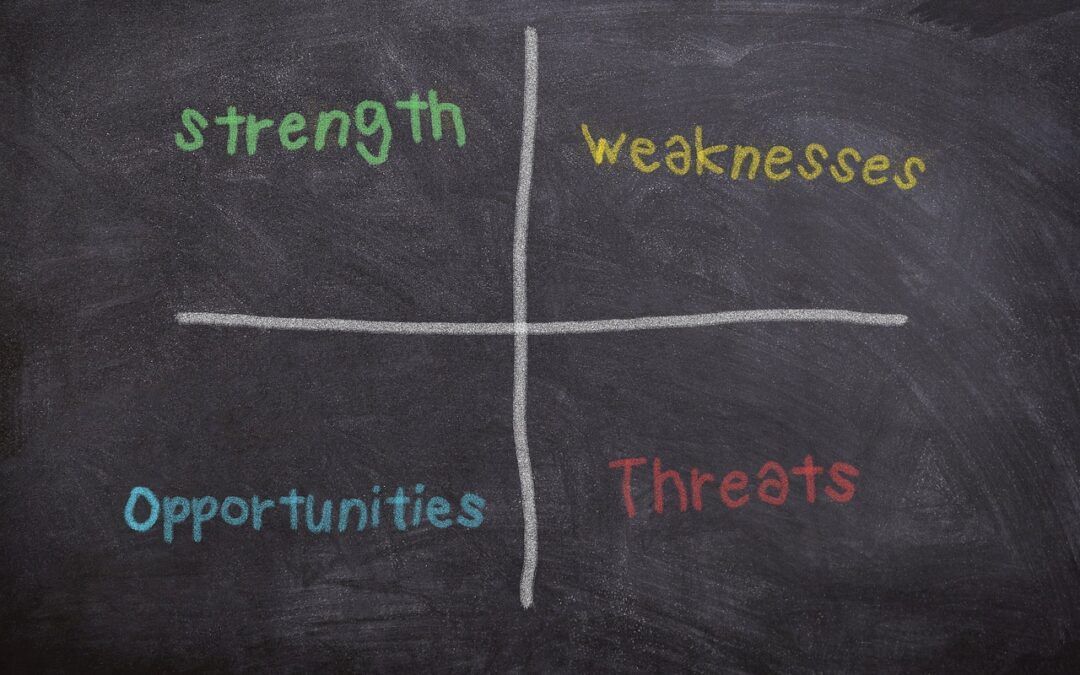Welcome to our blog posts! Explore our posts written by our coaches and discover what's possible.

Succession planning isn’t just about preparing for the future—it’s about protecting the value you’ve worked hard to build. In this conversation, Bob Wood from Sunbelt Business Advisors shares a broker’s perspective on why early planning is essential for a smooth and profitable business transition. Discover what business owners should be doing now to maximize value, reduce risk, and ensure their legacy continues long after they step away.

Women on Boards: Why It Matters By: Guest blogger: Patti Epstein, TEMPO Madison The Women on Boards Committee, formerly known as Project Reach, is a TEMPO Madison initiative aimed at increasing the number of women serving on business boards. The project provides resources for members aspiring to serve on business boards and for those responsible for filling board positions. Women on Boards: Why It Matters Research shows that gender-diverse boards are not just fair—they're smart business. Companies and communities benefit when women are meaningfully represented in boardrooms. Business Benefits Higher financial performance: Fortune 500 companies with more women directors outperform those with fewer. Stronger governance: Diverse boards are linked to better risk oversight, fewer reporting errors, and more engaged leadership. Improved ESG outcomes: Gender-diverse boards lead to stronger environmental, social, and governance performance. Enhanced reputation: Companies with women on boards are viewed more favorably by stakeholders. Better decision-making: Women leaders prioritize transparency, fairness, and stakeholder interests. Studies show that having at least three women on a board maximizes impact. Why You Should Consider Board Service Serving on a business board is a powerful way to shape strategy, drive change, and advance your professional growth. Benefits of Board Membership: Drive meaningful change. Influence decisions that affect industries, communities, and global challenges—from sustainability to equity. Expand your strategic thinking. Engage in high-level governance, risk oversight, and long-term planning that sharpen your leadership skills. Build powerful networks. Connect with accomplished peers, executives, and thought leaders across sectors. Stay ahead of the curve. Gain insider access to emerging trends, innovations, and market shifts. Amplify your voice. Represent diverse perspectives and advocate for inclusive, ethical business practices. Earn competitive compensation. Public company board members typically earn $50,000–$300,000, with additional benefits and equity in some cases. Grow personally and professionally. Learn from complex challenges, broaden your influence, and leave a lasting legacy. Before joining a board, clarify your goals—what you want to contribute and what you hope to gain. This self-awareness helps you find a board that aligns with your values, strengths, and aspirations. Recognizing that the best way to obtain a board seat is through connections, Women on Boards can facilitate introductions with individuals and entities responsible for filling corporate board seats. A key component of this effort is Women on Board's Database of Board Candidates, featuring Board Briefs and Bios of TEMPO Madison members. This database serves as a one-stop portal where businesses and recruiters can search for and find qualified candidates. If you are interested in submitting your board bio, don't hesitate to get in touch with Megan Purtell. Sources Catalyst: The Bottom Line – Corporate Performance and Women’s Representation Harvard Business Review: When and Why Diversity Improves Your Board’s Performance MIT Sloan: How Diversity Can Boost Board Effectiveness Harvard Law: A Diverse View on Board Diversity McKinsey & Company: Women in the Workplace

Even the longest-serving, most energetic and successful CEOs are going to exit the company at some point. If you serve on a Board of Directors, Succession Planning is a critical part of your responsibilities. For Boards of Directors, succession carries a different weight. Boards sit in a unique position: accountable to ownership for the company’s future, yet limited in authority to the CEO. That tension shapes the way you think about leadership transitions. The Weight of Stewardship For Boards, succession is more than a talent management process—it’s governance at its highest level. A Board must ensure there is a capable leader at the helm, today and tomorrow. A sudden change at the top can destabilize the company, your valuation and trust - with the team, your ownership and your customers. A Board must ensure the organization never faces that cliff. Authority Ends at the CEO—But Responsibility Doesn’t Boards don’t run the business. Their authority stops with hiring, evaluating, and (when necessary) replacing the CEO. Your accountability goes further though. Owners expect the Board to safeguard continuity, results, and enterprise value. That means as a Board you need to plan. How would you answer these? If the CEO stepped aside tomorrow, what’s our plan? How strong is the leadership bench below the CEO? Are we preparing the kind of leader the future will require? What does that mean for leadership style? Risk, Readiness, and Resilience Succession is fundamentally about risk management. Health issues, scandals, resignations—they rarely come with warning. The strongest Boards anticipate disruption by ensuring: A clear interim leadership plan exists. Communications are ready before they’re needed. Succession planning is not an afterthought, but part of your governance rhythm. Looking Forward, Not Just Replacing The mistake many organizations make is treating succession as a replacement exercise. But great Boards know succession is about the future. The next CEO should not simply mirror the last. Instead, Boards should be asking: What capabilities will this company need in five to ten years? Do we have the courage to appoint a leader with new skills, new perspectives, and diversity of thought? How do we balance continuity with transformation? The Effort is Ongoing The best Boards treat succession planning as part of what you do regularly, not a project. It's a standing agenda item. You view it as part of strategy, risk management, and governance—not an isolated activity. Closing Thought Succession planning gives your organization the gift of foresight. For Boards, it is less about control and more about stewardship. Owners, employees, and investors count on you to make sure the organization is never left without leadership. Done well, succession planning preserves continuity and also builds confidence, resilience, and the capacity to seize the future. Want to Dive Deeper? Check out our upcoming free webinar series: Special Session for Boards: How to Approach Succession Effectively, Monthly on the 1st Thursday @10:00AM. https://go.thryv.com/site/actioncoachdanecounty/online-scheduling?service=57zgp89swbhzzwgm

Anger at work is more common than you think — and when handled the right way, it can actually be a powerful tool for growth. In this blog, we dive deep into the root causes of workplace anger, explore healthy ways to manage your emotions, and share practical strategies to turn frustration into focus. Learn how to navigate tense situations, protect your professional relationships, and channel your energy into positive action instead of conflict.

I have a water bottle that says, “The biggest risk you can take is to do nothing.” Every time you let an employee decision slide, every time you wait on making an important purchasing decision, every time you avoid a tough conversation with a colleague… there’s a cost – and it’s higher than you think. You might think you’re playing it safe by waiting. You hope the situation might resolve itself if given enough time. You just don’t have the time and energy to deal with this right now. The problem is, the universe doesn’t work that way. There’s a huge cost to inaction – and it’s probably bigger than you think. Worst case, something that could have been dealt with early on as an issue has now become (very) personal for you both. I had a business partner who brought their spouse into the business. I knew in my gut this would be a tough dynamic, and it was. We ultimately elected to separate, and what would have been difficult and expensive became very expensive to untangle after the fact. The often-unseen cost of inaction is that you miss a big opportunity because you didn’t get to it – you left it for someone else to in and snatch out right before you. Here are some common (costly) inactions: Not dealing with a “C” or “D” employee, or Not holding your team accountable for their KPIs, or Letting an important decision slide with a business partner, or Kicking the can down the road on your strategic plan or succession plan And here’s how to break the avoidance habit: UNDERSTAND what you are avoiding and why – what’s the worst that can happen if you have that conversation? More often, we don’t have the conversation out of fear that we’ll look bad, be seen as mean, or be embarrassed publicly. Do your HOMEWORK: What’s this person’s communication style- Fast or slower paced? Honor that. Detail person or high level? Honor that in your communication, too. How are they likely to react? Put yourself in their shoes to understand how they may be feeling – no one likes to feel targeted or “caught.” Use accountability tools like the Circle of Reason (c) to collaborate on a solution. PRACTICE what you want to say. So often we stumble at the beginning and end of tougher conversations – memorize how you want to open the conversation, so you don’t have to think about what to say – you’ll just say it. Here’s an opener to get you started: “Hey Joe, there’s something we need to talk through. It’s important. I’m hoping we can get the issues out on the table so we can come up with a solution that we both feel good about.” SCHEDULE a time for the conversation so you can both be prepared. And then take a deep breath and dive in. Don’t expect perfection – make sure your heart is in the right place, and the odds are you’ll both be fine in the long term. Want to learn more? Check out your planning resources at MakeMoreWorkLess . As clients of The Benefit Works, you get significant discounts! Susan Thomson, CEO and Licensed Coach, ActionCOACH Business & Executive Coaching Proud Member of TEMPO Madison Direct: 608-441-5374 Email: mailto:susanthomson@actioncoach.com

Let’s face it — anyone can call themselves a “coach” these days. But when you’re investing serious time and money, you don’t need just any coach. You need the right coach. 1. Extensive Real-World Experience Theory alone won’t grow your business. The best coaches have been in the trenches — they’ve led teams, managed growth, and faced the same challenges you’re up against. They may not have built a business identical to yours, but the skills and lessons they’ve mastered are highly transferable. That outside perspective is often what helps you see solutions you’d miss on your own — practical advice grounded in experience, not just theory. 2. Business Acumen You Can Trust A strong coach understands how a healthy, thriving business should actually run. From financials to systems to strategy, they bring a 360° view that helps you spot blind spots and avoid costly mistakes. 3. Great Listening Skills The best coaches don’t just talk. They listen. They ask questions you hadn’t thought of, hear what’s behind your words, and help you see issues more clearly. Sometimes the breakthrough comes not from what they say — but from what they help you realize. 4. Accountability That Drives Results A good coach won’t let you drift. They’ll hold you accountable to your goals and push you beyond “good intentions.” That gentle (or not-so-gentle) nudge can be the difference between staying stuck and hitting the next level. 5. A Track Record of Results At the end of the day, results matter. Look for testimonials, case studies, and proven wins. Great coaches don’t just inspire — they help clients build measurable success. Final Thought The best business coaches combine wisdom, empathy, and accountability to help you achieve results you couldn’t reach alone. At ActionCOACH, we hold ourselves to these standards because coaching isn’t just about advice — it’s about transformation.

Business coaching is about making your business into a valuable asset that runs smoothly, with or without you. You'll Gain Clarity in Your Business A coach will help you get clear on your roadmap for your business and keep you accountable to the action steps. You'll learn how to take your time back and have a healthy work life balance. Learn new skills. A coach can help identify skills you or your team needs and suggest tools and systems to move you and your team forward. Confidence and Peace of Mind Once you have your roadmap and your coach holds you accountable you have confidence in your business, so you rest peacefully at night. Your business will be transferable. ActionCOACH Dane County had 7 business that sold in 2022-2023

Ever wonder why you can have the best team on the planet, but your results just aren’t there? When teams do their best work, they can move mountains. They increase your capacity and earning power dramatically. They let you pursue opportunities you can’t even see today. Teams are fun. Except sometimes they aren’t. So how to you turn your merry band of underperformers into your dream team? Take care of these common derailers. There are more gaps that we may need to plug based on your situation, but imagine how awesome it will be for you when these four foundational areas are solid: Communication. Every employee survey, whether you have an amazing culture or a rotten one, ranks communication at the top of issues list. Sit with this for statement a moment: Communication is the Response You Get. Your communication issues aren’t “everybody else.” They start with you, the leader. If you don’t like how your team is behaving, responding, or performing, something needs to change about the way you are communicating. Use the attached Team Profile Questionnaire to see where your communication needs some beefing up. Leadership. Becoming a great leader is a lifelong pursuit. There is no “check the box” that says you’re done. Have an insatiable curiosity around great leaders. Invest in every resource that you can get your hands on about becoming a great leader. Hang around leaders that you admire. Learn from as many different perspectives and cultures as you can. Great leaders are great lifelong learners. Investment in Your Vision, Mission, Culture & Direction. Most people are pretty good about sharing your vision, mission, culture and company direction when people start working for you. But then what? So often, the foundation of your business gets lost in day-to-day activities. Pretty soon people are busy, but not productive. Trying to do the right thing, but working on “yesterday’s project.” Vision, Mission, Culture and Direction are foundational to your business and drive everything. Put them on your team meeting agendas. Include them in performance reviews. The more clear your people are on where you are headed, why, and how they “fit,” the better and more productive the role they can play. Training. Too often, well-intentioned bosses give great individual contributors a promotion into management, and suddenly someone who has zero leadership skill or experience is expected to lead. Doesn’t work. It’s damaging to the person, the team, and to your company. Realize that leaders aren’t born—they’re trained. The more you commit to training leaders, the more money you’ll make, and the less time you’ll spend working. Pro tip: people who see a growth path with you stay on your team a lot longer. Make sure your high potentials know they have a future with you, and train them before you need them to step up. So… want to turn the team you have, into the team you know they can be? Take advantage of Team Profile for download. Have your team members take this, see what it tells you, and take action. We’re always here to help if you want to get there faster!
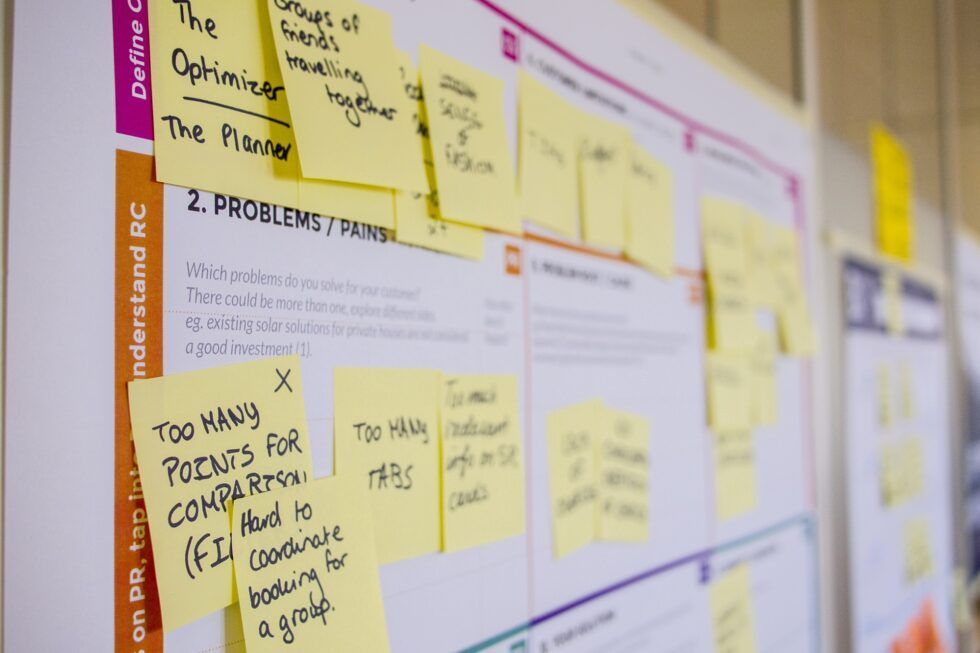
Vision, mission, culture, your cash and financial forecasts, how you deliver on time, your marketing strategies, your sales plan, your systems and tech to scale, your team… Wow. That’s a lot to think about. And if you think that’s a lot for YOU to think about, imagine how overwhelming this must be for your team. What pulls all of these pieces together is a business plan. No one does them. Or they don’t work. Here’s the reason why your plan doesn’t work. You started to do a plan, and then stopped—it was too hard, too expensive (to the tune of $40,000-60,000), and it took 6 months and some ungodly number of meetings to complete. Or you tried a free internet version and it was doubly-hard because you only had half the answers, so you stopped. You defaulted to having a plan in your head. The problem, is that your employees don’t have ESP. They want to please you, but they don’t really know what to do or where they are going. So, they stay busy trying to do the right things—probably not doing the right things, but at least they are busy. And, you guessed it—that means you’re doing everything because they are working on the wrong stuff. You must find a solution to this. Your employees won’t be any more able to read your mind tomorrow than they are today. If you want, use the Ascend™ Business Plan bootcamp. Two days, with two people from your team -you’ll have your roadmap. Our top coaches and software do the financial modeling for you. Your people, marketing, sales, operations and even action items are modeled out for the next 5 years. It takes 2 days. Not Six months. You’ll love it because it gives you and your team the fastest path to success. You’ll re-connect with your WHY in the process, and what that means to you in terms of how much money your business can generate. Your people can now connect with your WHY as well. They see the destination. They understand how to contribute. “Busy” turns in to “productive.” They know the end game, the roadmap, and the recipe. Now they can run fast. As Benefit Works clients, you get special access and $1,500 off the bootcamp. It runs quarterly, so you have ample opportunities to get in. Contact me at susanthomson@actionCOACH.com or at 608-441-5374 if you want to grab a spot for your company!

Let’s say you do a really nice job with Suspects and Prospects. You have your systems built out for your prospect’s journey to becoming a client, you follow it consistently, and you can predictably fill the top of your sales funnel. A “shopper” is someone who “buys” something from you one time. Think about what “buying” means. All too often you think buying means signing on the dotted line. Sometimes that purchase is bigger4commitment than your prospects are ready to make. They’re not ready to get married yet – they just want to go on a first date. So what can they buy from you that’s a micro-commitment? What can they buy that has a high perceived value, that you can put a price tag on. but isn’t marriage? Scheduling a paid next step is a micro-commitment. Buying phase I of a project with zero obligation to move forward in the process is a micro-commitment. Attending one of your seminars is a micro-commitment. Downloading a free assessment or tool where they have to provide their email address and phone number is a micro-commitment. Brainstorm what your micro-commitments could be. Some pointers: they should be truly valuable to your prospect they should be a true “micro-commitment” – if someone is not seriously looking to buy what you provide, they”ll opt out, not in they are a “first date” commitment. Your prospect can opt out at any time For example, when a prospect wants to learn more about what we do here at ActionCOACH and how we might help their company, we start with a 15-20 minute phone call. We ask a bunch of questions about your business and where you want to take it, and we’ll both know within 15 min if it makes sense for us to book a 2-hour Business Diagnostic so you can see what your results might be from a coaching program. That 15-minute call is a micro-commitment. For those people who make it to the Business Diagnostic, there are 2 more micro-commitments; a 4-page Business Background Questionnaire that you have 48 hours to return, so we can start working on your strategies, and then a 2-hour deep dive with one of our coaches to reveal the potential growth for your business using our toolkit. We used to do that 2-hour deep dive for free. You know what we found out? When we didn’t give it value (ie. we gave it away), the prospect didn’t give it value either. Half the time they wouldn’t show up. So now we charge for that business diagnostic. And you know what? People show up 99% of the time. The lessons here are three-fold: the right micro-commitments get your prospects excited and eager to have the next conversation the right micro-commitments will cause C & D prospects to opt out – they won’t engage when the next step requires that they have some skin in the game when they opt in, you know you have a motivated prospect. When they opt out, you won’t waste your valuable time chasing someone who doesn’t what to buy what you do Want to learn more like this? Make a micro-commitment. Join us for GrowthCLUB as guests of the Benefit Works. GrowthCLUB Quarterly Planning day is coming up on June 23rd at the Park Hotel in Madison, and is a day of networking, professional development, and creating your micro-business plan for the next 90 Days. You’ll leave clear, energized and knowing exactly what to do so that you can grow massively this quarter. There’s no commitment beyond that day. You can try us out for a day, meet a 100+ other local entrepreneurs, and then either choose to engage or try this on your own. Totally up to you – it’s just a date. AND, as clients of The Benefit Works, you get some special perks! GrowthCLUB is a 495 day/1980 per year program. The Benefit Works clients can have all of this at the Guest rate of 159 per person. Use Q3GCGUEST as your coupon, and remember to tell us that you are clients of Julie!

Customer Service is one of those things that we know can help you keep happy and loyal customers for a long time. We know it costs 6X more to land a new client than to keep an old one. Yet, customer service is also an area we tend to be a little lazy about. We leave it to our sales teams to “check in,” or project managers to “see how things are going,” or to you – the owner, to remember amongst the other 15 priorities on your desk to take a great client out to lunch. Consider this: Xerox did a study years ago to understand why customers leave. Their findings? 1% die 3% move away 5% buy from a friend 9% buy from a competitor 14% leave because of price I’d argue that most of those are controllable to some extent when you have good systems in place around customer service and maintaining relationships. Want to know the biggest reason that Xerox found about why customers leave? PERCEIVED INDIFFERENCE. 68% leave because they think you just don’t care. Wow. Let me show you a better approach than leaving your valuable customer relationships to chance. We call it the Customer Loyalty Ladder (TM). Used in thousands of businesses over the last 30 years and in over 81 countries, this proven framework takes the guesswork out of building repeatable systems around caring for your customers over the long term. It looks like this: SUSPECTS – This is the universe of people who could buy what you do. Moments of Truth to have systems for: what happens when someone goes looking for what you do? Can they even find your company? How well does your website answer their questions? What does it sound like when your team answers the phone? When they ask about pricing, what do you say? PROSPECTS – These are the folks who have raised their hands and have expressed interest in your product or service. Moments of Truth to have systems for: how long does it take your people to follow up? How do they feel when they are talking with your sales team? Are you sharing with them how to buy from you, or are you simply spewing the litany of products that you have and giving them too many options? SHOPPERS – They “buy” something. Moments of Truth to have systems for: What’s their experience like? Is it consistent with their expectations? If you were treated exactly like they are being treated, would you be excited to do business with you again? CUSTOMERS – They come back and buy a second or third time. Moments of Truth to have systems for: Does your team have the checklist and timing so that your new customers know everything they could buy from you? How consistent is your 1st 100 days with a new client? MEMBERS – These people are now members of your community. Moments of Truth to have systems around: How are you thanking and rewarding them for being your customers? How is your team helping them feel welcome in your tribe? ADVOCATES – These people will recommend you to others if asked. Moments of Truth to have systems for: What are they saying about you? What do you want them to say? RAVING FANS – These people sing your praises when you’re not in the room. They are referral machines for your company! Moments of Truth to build systems around: How are you thanking them consistently? What special events or swag are you regularly bringing to them? Next month, I’ll dive a bit deeper into each of these areas in the Customer Loyalty Ladder (TM). In the meantime, look at your company through the Loyalty Ladder lens. Where are your Moments of Truth? Where do you have great systems in place, and where do you need to plug some gaps? About ActionCOACH: Susan Thomson and Mike McKay own ActionCOACH Business & Executive Coaching of Wisconsin. Imagine a team that can take you from the chaos and stress of running your business to making more money, growing you r team, and gaining freedom!

You know that marketing is critical to bringing in business. It feels like you’re doing the everything you can – you’re certainly spending plenty of money on that digital media campaign, and sponsoring the latest golf tournament promises “good exposure”. But is what you’re doing actually bringing you customers? When you measure the right things, you’ll be able to answer that question easily – then your marketing becomes an investment that has a predictable return. You need to know these three numbers: Your cost to acquire a lead Your cost to acquire a customer The lifetime value of your customer Once you know these you’ll know exactly how much to invest in marketing, and whether it’s working for you. Let’s say your acquisition cost for a lead is $50 and your acquisition cost for a customer is $100. If you want 100 new customers, you need to invest $10,000 in marketing ($100 x 100 customers). Test and measure what works, and execute those strategies. If it costs you more than $100 to land a customer, that particular strategy isn’t right for you. There won’t be a “silver bullet” strategy that brings you hundreds of great customers, but there will be 10 strategies that bring you 5 customers each, and you’ll need to work every one of those. Here’s an example: One of our first clients 15 years ago was a carpet cleaning company. They loved Val-pak® advertising. Every time they ran a couple of zip codes, the phone would ring and they would land new customers. Yet they were losing money—couldn’t make payroll. How does this happen? Like this: Val-pack® customers had an acquisition cost of $150 The company’s average dollar sale (3 rooms) was $145 Most households get their carpets cleaned once every 3 years based on where they get the best coupons—there is zero customer loyalty because they’ve been conditioned to find the best price. So the lifetime value of a Val-pak® customer is $145. Not only did Val-pak® advertising attract price-shoppers, the company lost money on every sale. There was no opportunity to sell additional rooms—3 rooms was already an upsell! This company was literally selling themselves out of business with this strategy. You know what strategy proved to be a slam-dunk for them? Referrals. Once they learned the right way to systematize referrals and trained their people how to ask for them, profitable business began coming in the door consistently. These numbers are simple, and critical to bringing you profitable business!

Diamonds are formed when carbon deposits deep within the earth are subject to high temperatures and pressure. Steam, which can power a locomotive or fuel a factory, is formed when heat is applied to water and it reaches a boiling point. Runners under the pressure of a big race, achieve personal bests. Pressure is a useful tool… but it might now always feel that way. We just did a deep dive into personal and professional development with our team and a few clients last week, and here’s what I realized: without pressure you cannot grow. Without a big dream and big goals that you can’t even do yet, you’ll stay exactly where you are. Think about this if you ever feel “stuck.” If you’ve already proven to yourself that you can achieve something, your brain conserves energy by using the same pathways that it made you successful the first time. BE X DO = HAVE. If you want “have” something different, then you need to “do” differently and “be” a different person than you were before. Without pressure on what you want to have, there’s no reason for you to “be” or “do” any differently. Here’s the formula for Life Success = DREAMS x GOALS x LEARN x PLAN x ACT Dream BIG – so big that it makes you committed in your gut to achieving it. Mine is solving big, global problems, like recycling and getting plastic out of our oceans. Goals – require that you take action. You shouldn’t be able to achieve your goals without growing as a person or leader (pressure). My big goal is to grow a $100,000,000 company. If I were the level of leader to do that, we’d already be there. There is pressure for me to learn. Learn – What do you need to learn to achieve the goals? I need to study and mentor with other people who have grown $100,000,000+ companies. Plan – your learning comes before the doing. You can’t do the “do” without actually doing the learning. So I listen to specific podcasts, read on the subject, coach with specific coaches and participate in conferences and on Boards where I can learn and be challenged by my peers. Act – the daily, weekly and monthly habits that you and your team take to achieve the goals. DxGxLxPxA – in that order, and you can achieve anything. SO… dream big. Find the pressure that will actually get you to move. Understand that You have a “Be,” AND your Company has one too. Both need pressure to grow.

Prior to ActionCOACH, I had the opportunity to run a level (the kind you buy at Home Depot and use to see if your latest DIY project is “level”) business. I had years of corporate experience and had even run a small business unit, but this was a real business – one that I could grow, and prove to myself and others that I could do it. The company was in a tough spot. They had been trying to break in to the US market for a decade, and were nearly out of money. $100,000 a day behind on shipping. Losing money on some big customers. A well-intentioned but unsuccessful team. A year later, that team had turned things around in an amazing way. The business broke even in 12 months, and by year 2 we were double the size and profitable; off to the races! Sounds great! Big success! But there’s a back story. For those years that I was running that company, I was running everything – leading my team, in person at every sales call, running the operation, figuring out the marketing, financial reporting, making sure orders got out on time – everything. To the tune of 70+ hours a week plus evenings and weekends. Most weeks I was on an airplane, away from my family. The workload was insane. I was exhausted. I’d wake up like clock-work every day at 3:30 am; my mind racing about the next sales meeting, or could we ship on time, or are we going to run out of cash. I couldn’t turn it off. You can’t keep up that pace for long – it’s a straight line to burnout. I decided it wasn’t worth my marriage or my health. I left. It wasn’t until after I bought my current company, ActionCOACH, and the pattern started to repeat again, for the same reasons, that I finally turned a corner. My turning point was threefold: I learned that it’s okay, actually a sign of my maturing as a leader, to actively seek outside help I invested in myself – hired a coach to guide me through my blind spots and the areas where I wasn’t strong I USED A PROVEN BLUEPRINT. It wasn’t that I was doing the wrong things – it was that I was building a business without a blueprint. So, I made things way harder than they needed to be. You would never build a house without a blueprint – building your business is way more complex! When I got the PLAN IN MY HEAD into an ACTUAL PLAN that my team could see and understand, everything got easier. We started working on the RIGHT things – not working harder. Today I co-own a thriving, profitable, globally award-winning firm with 3 regional offices, that gives leaders the kind of help and support I wish I’d had all those years ago. And I do it all in 40 hours a week, with lots of vacation time in cool places around the world, time to give back to the Community, and plenty of money and time to enjoy the things and people I love. If any of this resonates with you – you’re working too many hours, if your business is not transferrable because it’s too dependent on YOU – then it’s time to get your plan – your blueprint – done. That way you can grow a way that’s healthy, transferrable, and dramatically increases the value of your business – AND gives you back your time and energy so you can enjoy it! Best of all? We can help you get your plan done in 2 short days, at a fraction of the cost of a traditional business, strategic or succession plan. If you are interested in learning more, ping me at susanthomson@actioncoach.com and put BENEFIT WORKS PLAN in the subject line.
